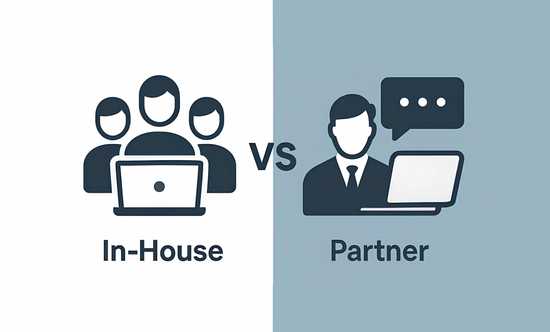Five Signs of a Perfect Technical Partner
Companies choose outsourcing to achieve their goal faster, cheaper, and more efficiently than they could do themselves. However, this doesn’t mean outsourcing is an easy route.
For a minor one-off task, finding a vendor with adequate experience, proper stack, and reasonable prices is enough. However, the more ambitious the project gets, finding not only a qualified contractor but a reliable partner becomes essential.
The project’s success relies heavily on the negotiations between the client and the vendor, which, in fact, never end. The customer has to define and articulate objectives and constantly monitor progress. The vendor has to assess their capabilities accurately and ensure the development is transparent. Miscommunicate, and things will go awry even with the most tech-savvy vendor.
How do you know that cooperation with a partner will prove fruitful and, to a large extent, frictionless?
1. The initial negotiations went off smoothly and made a good impression.
Remember that a partnership is a long-term relationship. Of course, you should not brush qualified vendors aside just because you have not “clicked” right off the bat. But it is worth noting when making a choice.
2. The vendor specialises in your field.
That way, you can get started on the project faster instead of educating your partner on important business subtleties. To prove their competence, a trusted vendor will share references from other customers and relevant success stories.
3. The vendor approaches the project’s architecture responsibly.
As the partner cares about the project’s success, they are willing to examine potential technical solutions thoroughly and illustrate their choices with case studies drawn from their practice. If the agreed plan requires changes afterwards, the partner should coordinate them with you in detail, especially if the costs and the schedule are affected.
4. The partner’s team works as a coherent body.
The vendor should be able to explain in specifics their working process throughout all development stages, from analytics and design to QA. When every participant understands each other’s responsibilities clearly, and the partner’s team complies with the required industry standards, there won’t be any trouble.
5. The partner aims for seamless integration.
It is nice when a partner takes on all the burdens of development. However, it is even better if they ensure that the new product is easily synchronised with your existing systems and prepare detailed technical documentation for future use by your developers.
Ambitious projects will require the utmost care from both you and your partner. So choose partners who believe in your idea, know how to implement it, and are willing to cooperate with you as closely as necessary.
Learn more about what to look for when choosing a partner and developing the product with this tip sheet.


